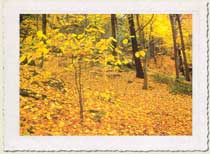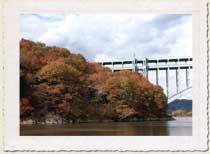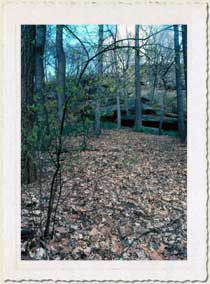
Inwood Hill Park
Shorakapok Preserve
Borough: Manhattan
Acres: 136
Habitat Type: Forest, Salt Marsh
The Shorakapok Preserve in Inwood Hill Park is a quiet retreat in Manhattan, with some of the only natural forest and salt marsh left on the island as well as unique glacial geological formations. The majority of the park is a thick deciduous forest, with hiking and nature trails curving up the hill. The forest is home to impressive geological features, such as potholes. Much like the irksome potholes in city streets, natural potholes are depressions formed in rock as a result of glacial melting. “Indian” caves, which are natural rock overhangs once used as shelter by Native Americans, can also be found here. Inwood Hill Park is home to the last remaining salt marsh in Manhattan. Though small, this marsh is significant as a reminder of the extensive salt marshes that once surrounded the island.
Inwood Park’s forests contains mature red oak and some of the largest tulip trees in the City. Much of the park stretches along dry hills whose slopes support a diversity of trees and a herbaceous understory. There is also a rich, moist valley between two rock ridges called The Clove. During the early spring, the valley is covered in wildflowers, which are able to thrive before the thick canopy is filled. Some of these wildflowers include downy yellow violet, bloodroot and Dutchman’s breeches. The forest is also home to over 150 species of birds, including hairy woodpeckers and black-capped chickadees. The salt marsh is a good location for viewing waterfowl, including great blue herons, great and snowy egrets, and belted kingfishers.
Forests in the city are subject to many disturbances. Flash flooding incidents are frequent due to the high proportion of paved surface, and high water velocities lead to soil erosion which can eventually undercut trees. In addition, if left un-checked invasive plants, which have either escaped from cultivation or have been brought over accidentally from other continents, disrupt the ecological balance of the forest. Trees such as the Norway maple, leaf out earlier than native trees, and grow faster. Their dense canopy eventually prevents the growth of any other plant. The bare soil underneath these trees inevitably erodes. Erosion causes further environmental problems such as non-point pollution, where pollutants from our city streets is washed out to the rivers and ocean. To help alleviate these issues, the Parks Department’s Natural Resources Group has a forest restoration team detailed to the parks of northern Manhattan, and Inwood Hill serves as the basis for operation. Throughout the past five years Inwood has benefited from hundreds of thousands of grant dollars in support of invasive species removal and native species planting, as well as the prevention of soil erosion. Grant funding for these projects has come from the New York State Clean Water/Clean Air Bond Act and Environmental Protection Fund, and the National Fish and Wildlife Foundation.
Photographs
Directions
By Subway: Take the 1/9 train to 215th street and walk north to 218th. Take a left on 218th to the end, and you will reach the park.
Or take the A train to 207th street and turn west onto Seaman Ave and walk north into the park.
By Bus: Take Bx7, Bx12, Bx20, M100 to 207th street.
By Car: From Westside Highway, take the Dyckman St exit. Follow the exit as it merges with Broadway. Drive north on Broadway to 218th street. The entrance to the Park is on the end of the street.
From FDR/East River Drive, go north to the end. The end of the highway is at Dyckman St. Bear left on Dyckman St. Take Dyckman west to Broadway and take a right on Broadway. Proceed north to 218th St and make a left turn and park at the end of the street.



